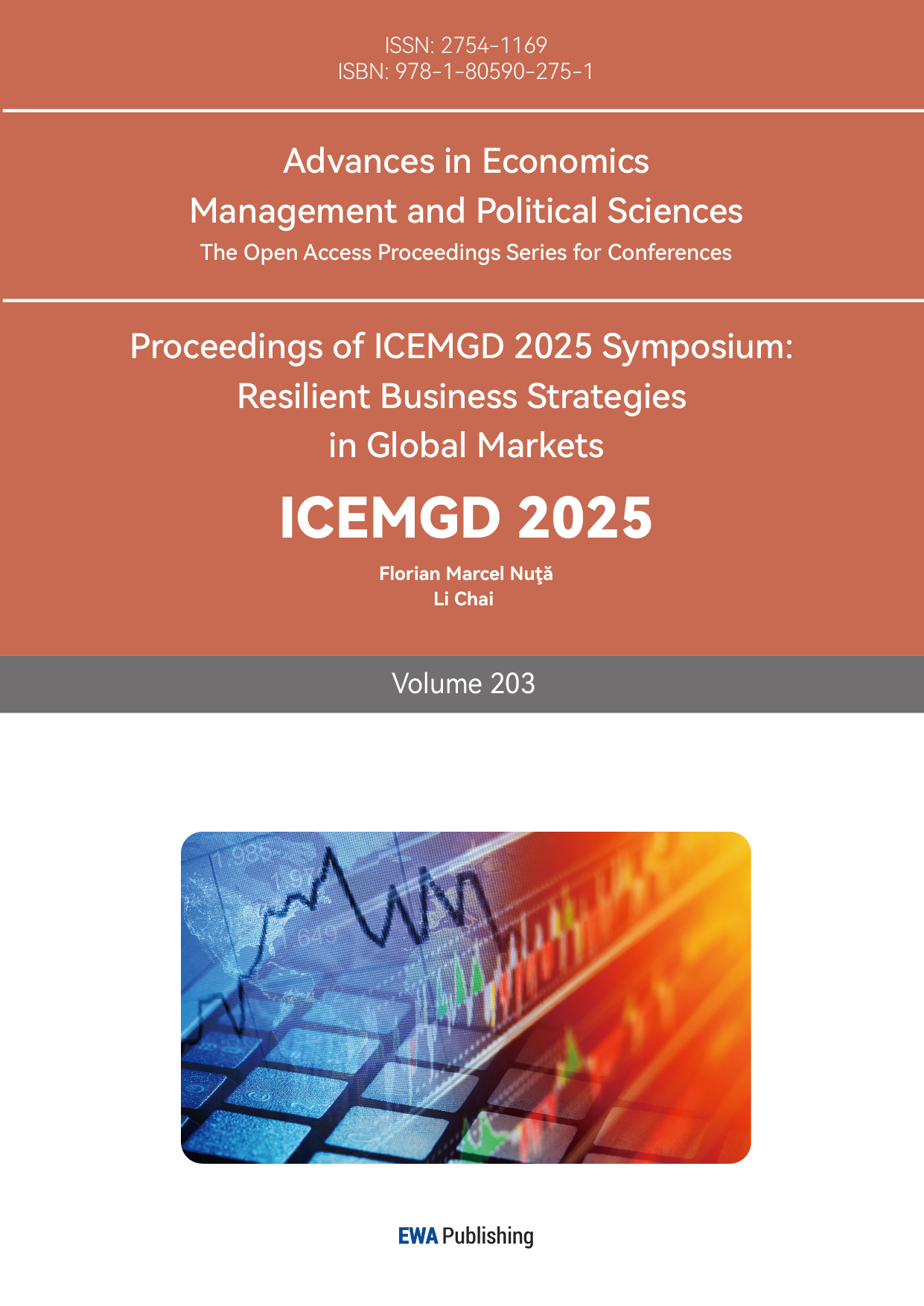References
[1]. Xu, J.Y., Li, P., Wang, Y.J. (2016) Transnational Brain Drain and Human Capital Accumulation in China: A Perspective Based on Studying Abroad. Population and Economy (3), 91-102.
[2]. Li, B.Y. (2009) International Mobility of Human Capital and the Brain Drain Crisis in China. Research on Financial Issues (5), 106-111.
[3]. Peng, Y.Z. (2022) A Multi-dimensional Study of the Transnational Mobility of Chinese Scholars Based on Academic Performance. East China Normal University.
[4]. Zhan, G.H., Li, Z.K. (2018) An Exploration of the Impact of Intellectual Capital Outflow on Technological Innovation. Science and Technology Management 39(6), 96-102.
[5]. Bhagwati, J., Hamada, K. (1974) The Brain Drain, International Integration of Markets for Professionals and Unemployment. Journal of Development Economics 1(1), 19-42.
[6]. Giannoccolo, P. (2009) The brain drain: A survey of the literature. Università degli Studi di Milano-Bicocca, Department of Statistics, Working Paper.
[7]. Beine, M., Docquier, F., Rapoport, H. (2008) Brain drain and human capital formation in developing countries: winners and losers. The Economic Journal 118(528), 631-652.
[8]. Marini, G., Yang, L. (2021) Globally bred Chinese talents returning home: An analysis of a reverse brain-drain flagship policy. Science and Public Policy 48(4), 541-552.
[9]. Li, P., Yang, L.N. (2013) The Impact of Human Capital Outflow and Remittances on Technological Innovation. Modern Finance (Journal of Tianjin University of Finance and Economics) 33(2), 18-27.
[10]. Meng, X.X., Yu, C.L. (2024) Human Capital Outflow, the Internet, and Technological Innovation in Developing Countries. Systems Engineering Theory and Practice 44(3), 773-799.
[11]. Popogbe, O., Adeosun, O.T. (2022) Empirical analysis of the push factors of human capital flight in Nigeria. Journal of Humanities and Applied Social Sciences 4(1), 3-20.
[12]. Usman, M.A.M., Ozdeser, H., Çavuşoğlu, B. (2022) On the sustainable economic growth in Sub-Saharan Africa: do remittances, human capital flight, and brain drain matter? Sustainability 14(4), 2117.
[13]. Šlibar, B., Oreški, D., Klačmer Čalopa, M. (2023) Push and Pull Factors in Brain Drain Among University Students. Management: Journal of Contemporary Management Issues 28(1), 65-80.
[14]. Ogbeifun, L., Shobande, O.A. (2022) A reevaluation of human capital accumulation and economic growth in OECD. Journal of Public Affairs 22(4), e2602.
[15]. Wu, J.J., Wang, X.Y. (2016) The Impact of Brain Drain on Technological Innovation in the Home Country: An Empirical Analysis Based on Chinese Immigrant Data. Urban Studies Journal 37(4), 1-6.
[16]. Adewumi, S.B., Ogbodo, C.J., Onoh, J.E. (2019) Human Capital Flight, Remittances and the Problem of Achieving Sustainable Economic Growth in Africa. International Journal of Research and Innovation in Social Science 3(3), 190-197.
[17]. Chen, X.X. (2021) The Impact of Human Capital Outflow on Total Factor Productivity in China. Shandong University.



